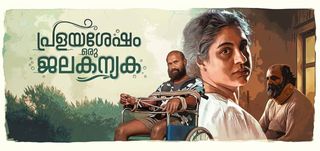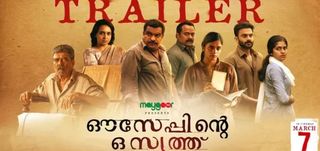Naalu Pennungal Movie Review
Adoor Gopalakrishnan's much awaited Naalu Pennungal is here at last, released commercially, though most are likely to view it as a non-commercial film. Naalu Pennungal is different from other Adoor films, especially since it narrates not one story, but four different ones, each distinct from the other with no apparent attempt to link them together. But there is an underlying link. All the four stories (penned by the Jnanpith recipient, the late Thakazhi Sivasankara Pillai) speak about feministic concerns. And that is what makes Naalu Pennungal interesting and relevant.
The first story in Naalu Pennungal is Oru Niyamalanghanathinte Katha, which has a street prostitute named Kunjipennu as the pivotal character. The story, set against the 1940's, relates about what happens when Kunjipennu at last finds someone who loves her dearly and who wants to lead a life with her, as her husband. How society reacts to this is narrated subtly, and forms the rest of the plot.
The second story, titled Kanyaka, is about a very bold and industrious peasant girl Kumari, who enters into wedlock with a man named Narayanan, who runs a shop and who has been praised by all as someone who doesn't have any kind of vice. Whether or not the marriage with Narayanan works out for Kumari forms the rest of the story.
The third story, titled Chinnu Amma, tells the story of a middle aged homemaker named Chinnu, who is issueless and who is as sad as her husband Raman Pillai about this. And there is Nara Pillai, who is on a visit to his native village after being in Tamil Nadu for a long time and who visits Chinnu frequently with lecherous intentions.
The fourth story Nityakanyaka is about Kamakshi, a girl from an affluent family, who remains a spinster even after her younger sisters and younger brother get married and live with their families. The plight of Kamakshi and the way society sees her and the way she reacts to the responses of those around her forms the plot.
The helplessness and vulnerability of the fairer sex, the inherent strength they have, and the vicissitudes of Fate to which women often fall prey in a male dominated society are some of the issues that get discussed in Naalu Pennungal. A very important aspect of the film is that even seemingly minor characters are portrayed with due importance given to them, for example the character played by Sona Nair in the first story and the character played by Ramya Nambeeshan in the fourth one.
Performance-wise everyone has done justice to their roles. Padmapriya as Kunjipennu, Geethu Mohandas as Kumari, Nandu as Narayanan, Manju Pillai as Chinnu, Mukesh as Nara Pillai, Murali as Raman Nair, Nandita Das as Kamakshi, Kavya Madhavan as Kamakshi's sister Subhadra and Ravi Vallathol as Subhadra's husband Parameswaran Nair, all have performed well. And so have Ashokan, Sreejith, Manoj K. Jayan, M.R. Gopakumar, and KPAC Lalitha.
Technical features too are worth mentioning. Cinematography by M.J. Radhakrishnan is excellent. The editing, art-work, sound recording, costume-designing and the background score make the film stand out.
Surprisingly, the film, which speaks volumes about women in general, doesn't seem to have cut much ice with the womenfolk in Kerala (who obviously are trapped in the mesmerism of tear-jerkers on the small screen), whereas reports say that women constituted the majority of the viewers when the film was screened at the Toronto Festival. Can the makers not do something to get the film across to such an audience which ought to have been the prime target of the film?
Naalu Pennungal may also be a letdown to those who venture to compare it with Adoor's masterpiece works like Elipathayam, Kodiyettam or Swayamvaram. Just see it as an independent work, setting aside all prejudices and intellectual presumptions, and you will definitely enjoy the film - if you are the kind that enjoys well-told serious movies, that is.
OTHER REVIEWS



















